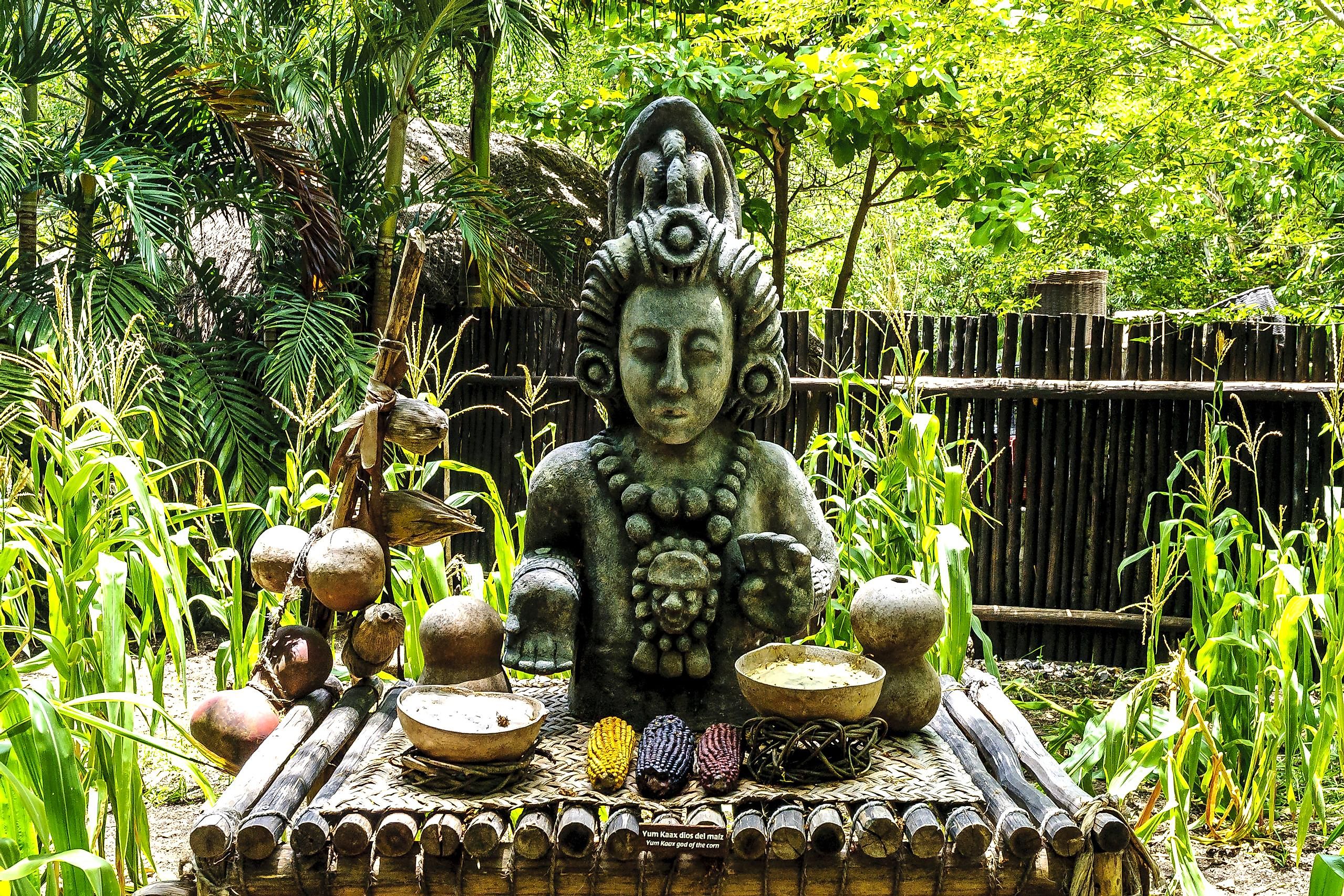
Discover Mayan Religion
Long before the arrival of Europeans in the Americas in the late 15th century, Mayans reigned supreme over much of Central America and Mexico. The Mayans established themselves as one of the longest-lasting and most influential Mesoamerican civilizations to ever exist. Their society was incredibly advanced and sophisticated, not just relative to the region but globally as well. The Mayans' understanding of astronomy and other scientific endeavors was decades, if not centuries, ahead of any other people on Earth. Many of these breakthroughs were religiously inspired in the pursuit of a better understanding of their gods, as well as planning and organizing festivals and ceremonies in their honor. The Mayan faith is often either overlooked or entirely misunderstood by today's layperson. Just like the faiths of the modern world, the religion of these great people is incredibly complex and layered and had tremendous influence over the day-to-day life of the average Mayan.
The Creation Of The Maya
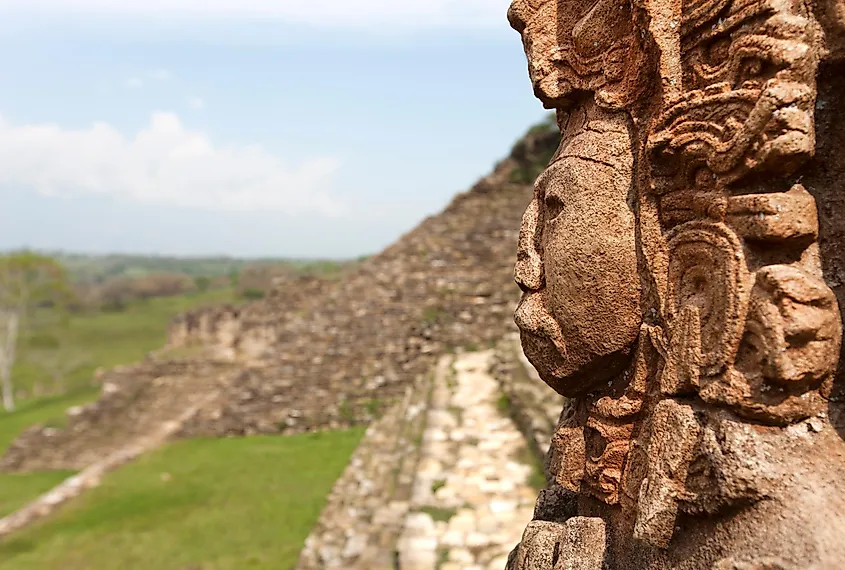
The Maya, like many other Indigenous peoples of the Americas, were polytheistic. This meant that instead of the one, singular, all-powerful God that is present in the Abrahamic faiths of Christianity, Islam, and Judaism, the Mayans believed in numerous gods similar to Hinduism or Greek and Roman paganism.
Even though the Maya worshipped numerous gods, they thought that Huracán, the god of the wind and the sky, created humans and the Earth. They believed that the Earth and the sky were born out of a single ceiba tree planted by Huracán. After this, plants and other animals were made, but he was not satisfied. The animals could not or would not honor him and acknowledge his gift of life, and so he created humans for this purpose.
The first humans Huracán made were built from mud. But he soon realized that these creations were lazy and lacked intelligence. Upon seeing his mistake, Huracán destroyed them all with water. On his second attempt, he made humans out of wood, but these humans were also flawed. They were made immortal, but they were thankless and did not honor Huracán. He destroyed them, too, with boiling water.
His third attempt was much more successful. He made these humans out of maize and mixed this with the blood of the other gods. These original humans were thought to be too intelligent, so Huracán clouded their minds and made them more manageable. They worshiped him and the other gods, too, and were deemed worthy to live.
The Mayan Afterlife
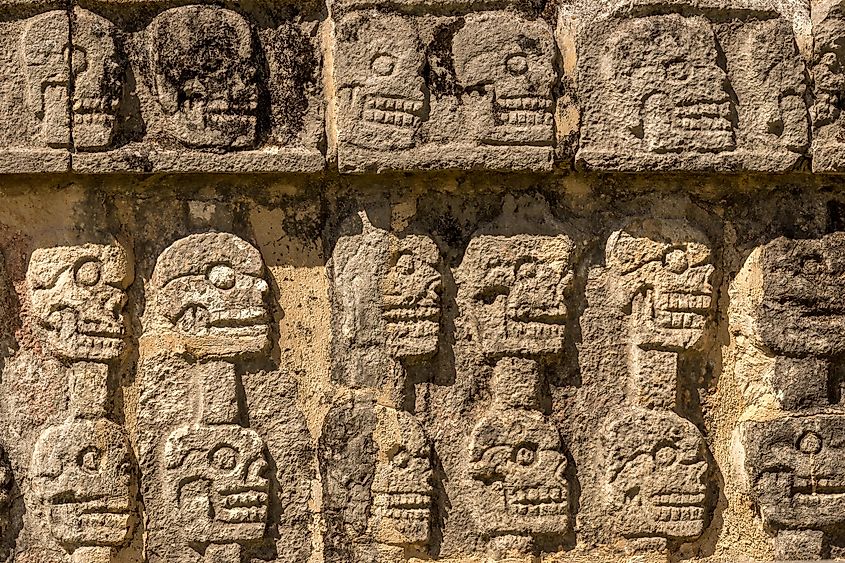
Unlike the Abrahamic faiths mentioned previously, the Maya thought there were three places someone went when they died: the upper world, the middle world, and the underworld. The Ceiba planted by Huracán was thought to climb through each of these realms. When most people died, it was assumed that they went to the underworld or the bottom of the tree. Once there, it was their job to climb up through the multiple levels until they reached the top, which was also the most idyllic part of the afterlife.
The Maya believed that both the living and the dead could communicate with one another in our world. It was thought that the dead could reach the world of the living at certain geographical locations such as streams, lakes, caves, and grottos, whereas the living could speak to the souls of the dead in ceremonies that often included the use of hallucinogenic drugs.
It was also believed that good and evil spirits could latch themselves to a certain object, place, or person. This could draw parallels to how someone from the West might describe a "haunting" or a "curse," but it is assumed that the Maya saw these spirits as an unavoidable part of life and were not something to be overly feared or troubled by.
Bloodletting And Human Sacrifice
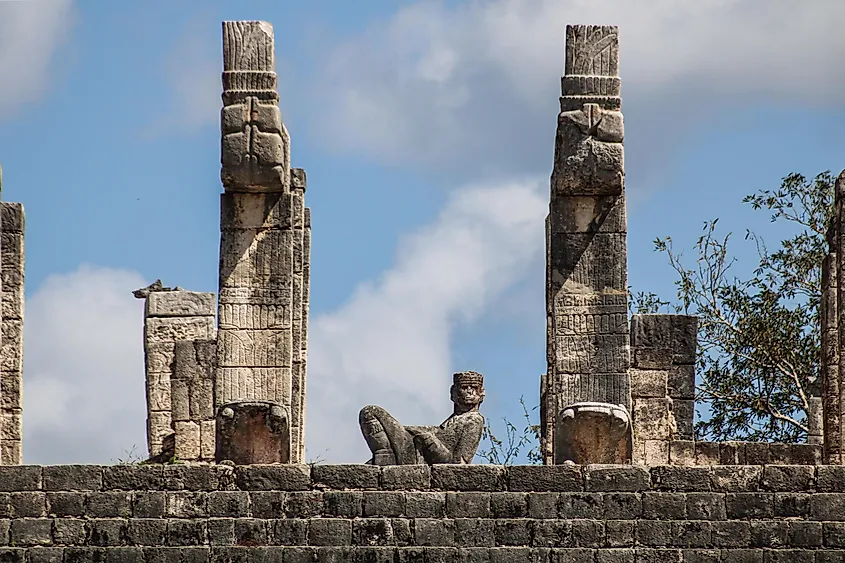
The most well-known aspect of the Mayan faith is certainly the human sacrifice. While this is often poorly understood or compared with the faith of their Aztec cousins, human sacrifice did play some role in the Mayan religion, but it is still not known how common or frequent this practice was. Bloodletting, for instance, a ritual that is often unheard of, was much more pervasive than human sacrifice ever was.
Bloodletting was something that was only practiced by the upper echelons of Mayan aristocracy. Mayan royalty would purposely cut themselves and draw blood as a way to make amends for the blood that the gods spilled to create humanity. The Mayan elite thought that since they were ruling over the lower classes, they were the only ones whose blood held true value and would satiate the gods.
Both sexes of the royal family were expected to take part in these often painful and dangerous rituals. The priest class even made special tools to inflict as much pain and discomfort as possible while also making sure not to put the participant in immediate danger. Different parts of the body would be targeted in these rituals. Women would often cut their tongues while men would draw blood from their foreskin by piercing it with stingray barbs or thorned ropes.
In times of war, human sacrifice was much more acceptable and common. Not only was the blood of human sacrifices thought to help stave off the wrath and anger of the gods, but it could also be used to help Mayan warriors in battle or be granted protection.
The most widely practiced form of human sacrifice was a simple decapitation. This kind of sacrifice is thought to have been used more in times of war and was probably a form of "practical" sacrifice. The rarer version of this is the infamous and chilling act of removing the heart of a captive while they are still alive. This type of killing would have likely only been carried out for special occasions, such as during religious ceremonies and festivals.
Major Mayan Gods
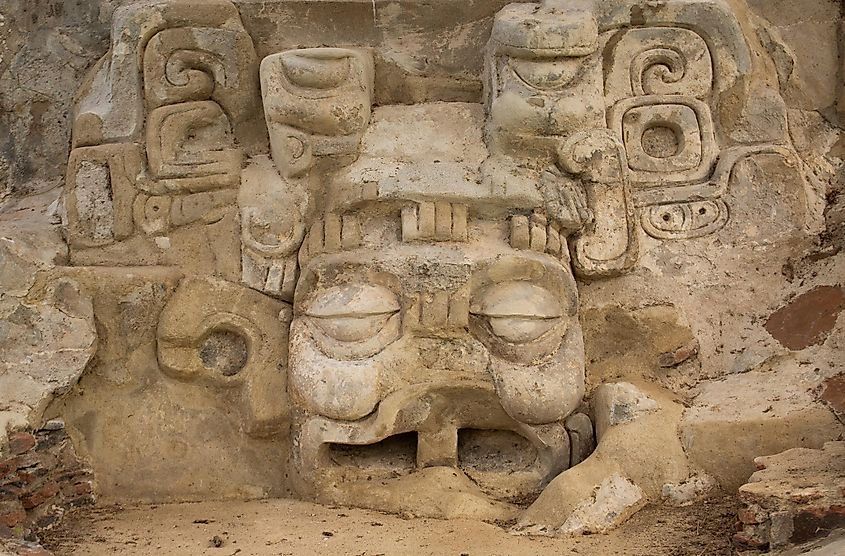
Huracán
Of course, the most important god of the Mayan pantheon is Huracán, the god of the wind and sky. Sometimes referred to as the Heart of Heaven, Huracán played an integral role within the Mayan faith. His true role in the faith is sometimes debated between scholars due to how fluid the positions of gods could be in the eyes of the Maya, but it is indisputable that Huracán was one of the most important. A clear distinction is made between Huracán and the rest of the gods thanks to his role in creating the Earth and the Mayan people. While the other gods obviously hold immense power and respect, Huracán seems to have a slight edge in the pecking order within the Mayan religion.
Chak
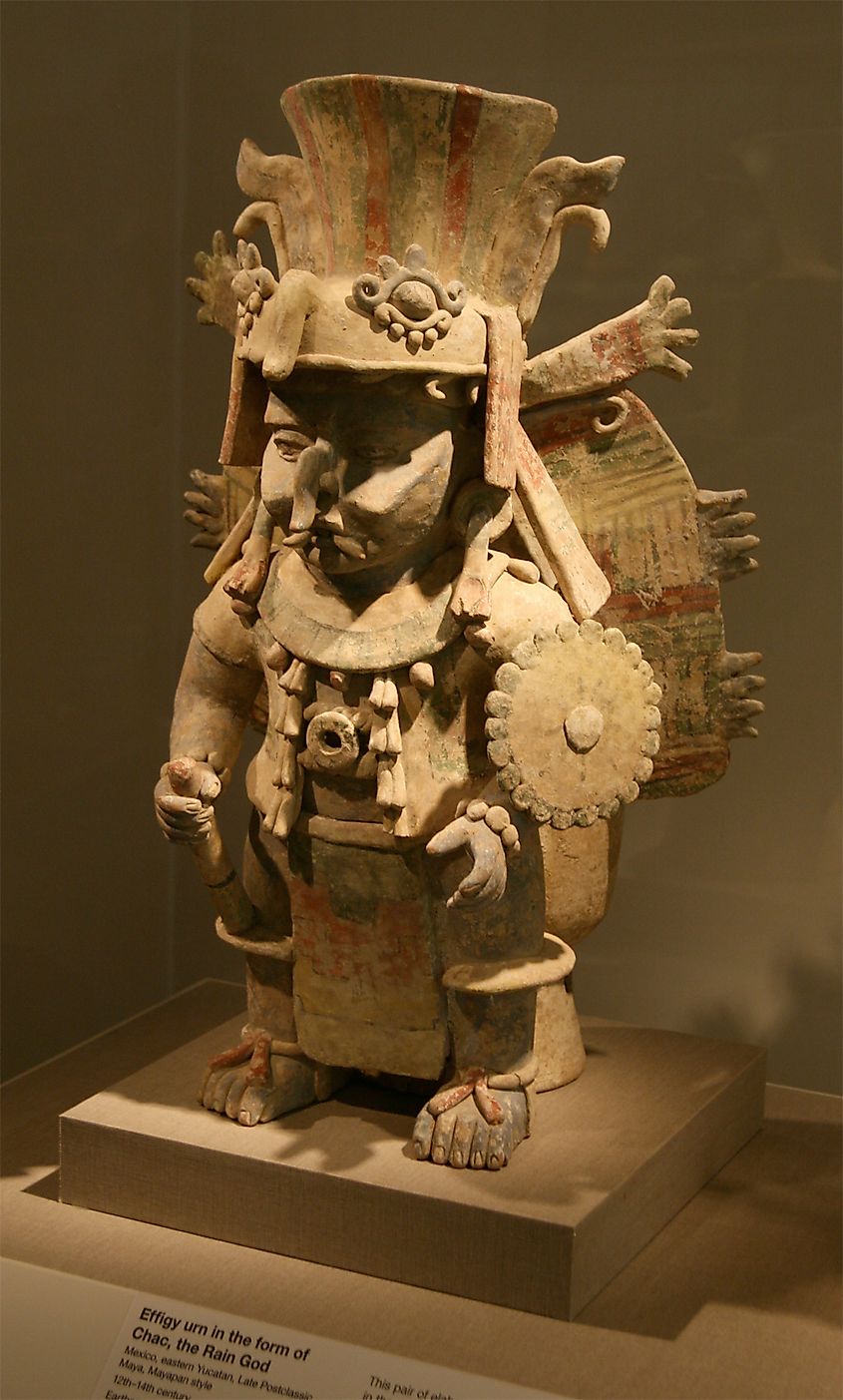
The god of rain, Chak, played an essential role in the highly agricultural Mayan society. The Mayans depended heavily on various crops for food and sustenance, and it can be safely assumed that they held him in high regard. Even though Chalk provided the much-needed rain for crops to grow, he could also bring about untold destruction in the way of floods and storms. Even though there was much respect for Chak from the Mayans, he was also one of the most feared and thought to be unpredictable and erratic.
Ix Chel
Sometimes called God O, Ix Chel is the goddess of rainbows. In Mayan society, rainbows were not thought of as something nice and pleasant but rather symbolized the presence of demons and were often a warning sign of bad things to come. Ix Chel was thought to bring about bad luck and sickness wherever she went. She is most usually depicted as a fanged hag or witch, but in more flattering artwork, she is shown as a beautiful young woman. In certain instances, Ix Chel was known to symbolize childbirth and fertility.
Xbalanque And Hunahpu
These two brother gods are perhaps the most fascinating entities of the entire Mayan faith. Xbalanque and Hunahpu exist in the Mayan underworld and are often involved in many adventures together and are the source of many tricks and mischief among other Mayan gods. The Mayans thought that Xbalanque and Hunahpu could be seen in the stars in the night sky and would travel between the underworld and the celestial realm in shooting stars. Of all the gods, it appears that these brothers are the least threatening of the bunch.
Cosmology And Calendars
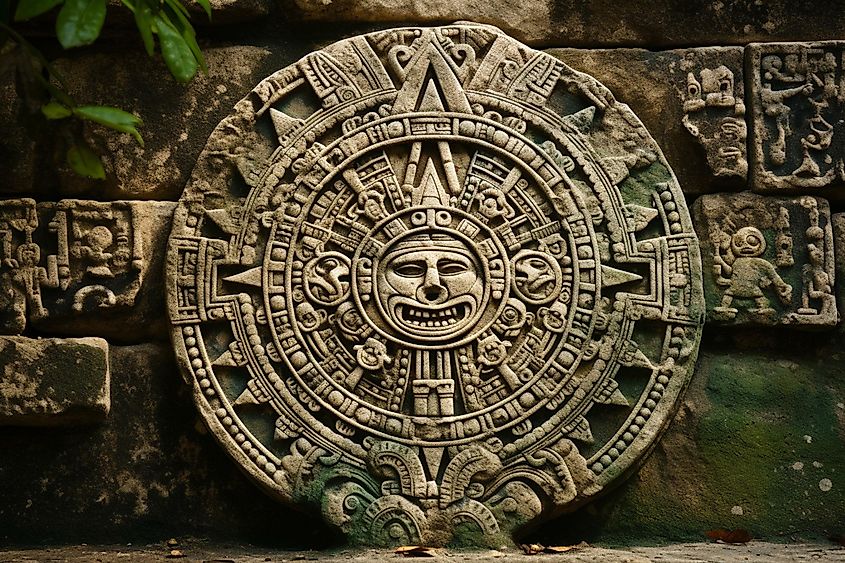
The Mayan faith was heavily intertwined with the cosmos and universe. The advanced knowledge the Mayans had of the stars allowed them to accurately predict cosmic events such as solar eclipses, which were then used to mark the beginning or end of various religious ceremonies. The Maya used two separate calendars - one which was 365 days long and based on the solar cycle and a second calendar that was only 260 days. The second calendar was used and studied mostly by the priests and other religious leaders in Mayan society. It was the priest class that slowly became experts in the fields of astronomy and mathematics. The priests would dedicate their entire lives to studying and analyzing the lunar and solar cycles as well as the movements of the planets that they were able to see from Earth.
Unlike the long-dead polytheistic faiths of the ancient Romans, Greeks, and Egyptians, aspects of the Mayan Religion are still practiced to this day. Christian elements have superseded various aspects of the Mayan faith, but there are still thousands of modern-day Maya who still claim to practice the religion of their ancestors.
The Mayan faith gives modern historians and researchers a great look into what life must have been like for the average Mayan. No matter how grand and powerful their civilization might have become, there was still this ever-present looming threat that the gods would destroy them all in a fit of rage and vengeance. There is no doubt that when they experienced their collapse, they thought they were being punished by the very beings that had created them.











